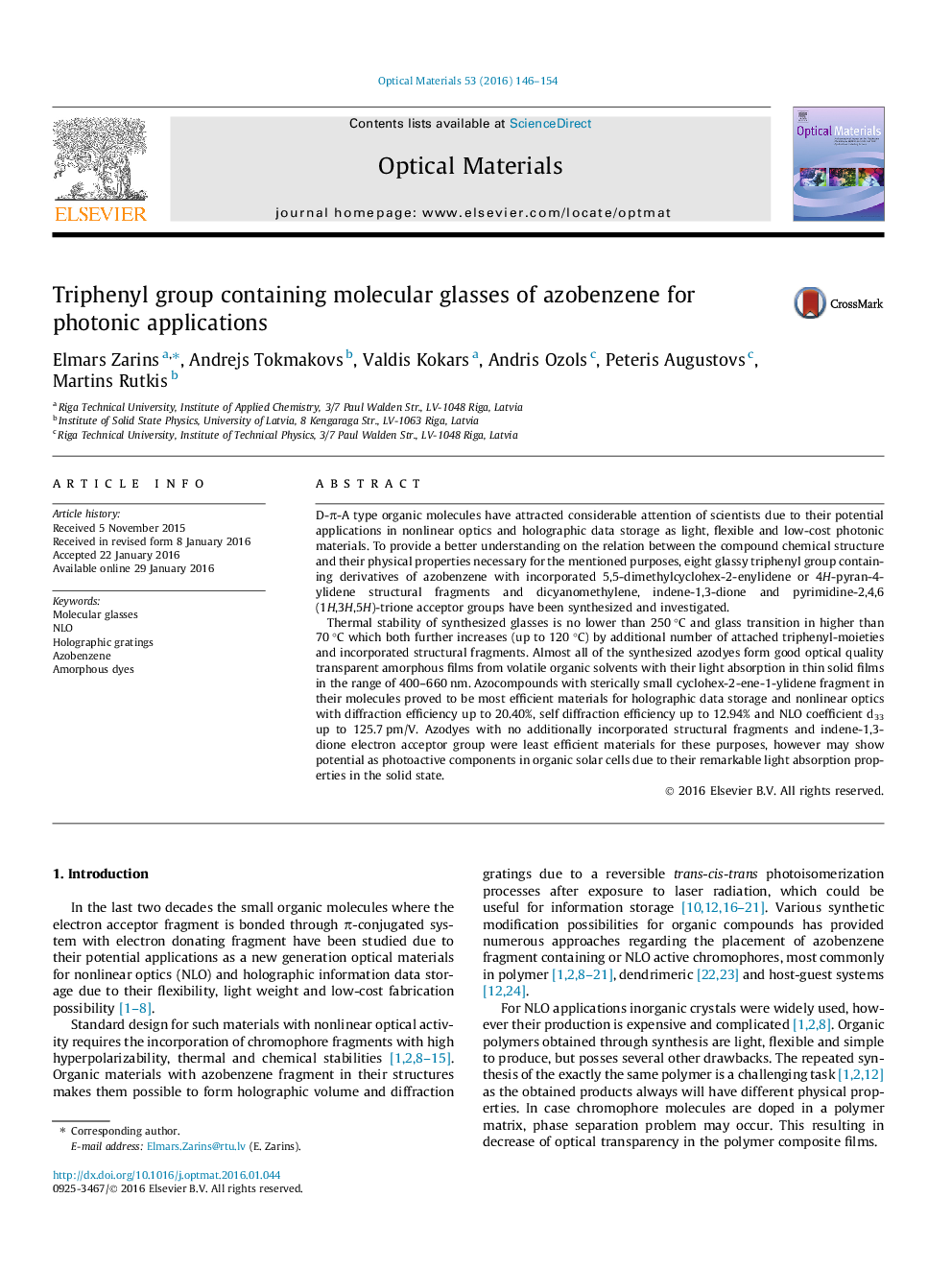| کد مقاله | کد نشریه | سال انتشار | مقاله انگلیسی | نسخه تمام متن |
|---|---|---|---|---|
| 1493377 | 1510781 | 2016 | 9 صفحه PDF | دانلود رایگان |
• Triphenyl group containing glassy derivatives of azobenzene were synthesized.
• Glass transition temperatures higher than 70 °C and up to 120 °C were obtained.
• Pure thin films show NLO coefficient d33 up to 125.7 pm/V.
• Pure thin films show diffraction efficiency up to 20.40%.
• Glassy compounds could be perspective in nonlinear optics and holography.
D-π-A type organic molecules have attracted considerable attention of scientists due to their potential applications in nonlinear optics and holographic data storage as light, flexible and low-cost photonic materials. To provide a better understanding on the relation between the compound chemical structure and their physical properties necessary for the mentioned purposes, eight glassy triphenyl group containing derivatives of azobenzene with incorporated 5,5-dimethylcyclohex-2-enylidene or 4H-pyran-4-ylidene structural fragments and dicyanomethylene, indene-1,3-dione and pyrimidine-2,4,6(1H,3H,5H)-trione acceptor groups have been synthesized and investigated.Thermal stability of synthesized glasses is no lower than 250 °C and glass transition in higher than 70 °C which both further increases (up to 120 °C) by additional number of attached triphenyl-moieties and incorporated structural fragments. Almost all of the synthesized azodyes form good optical quality transparent amorphous films from volatile organic solvents with their light absorption in thin solid films in the range of 400–660 nm. Azocompounds with sterically small cyclohex-2-ene-1-ylidene fragment in their molecules proved to be most efficient materials for holographic data storage and nonlinear optics with diffraction efficiency up to 20.40%, self diffraction efficiency up to 12.94% and NLO coefficient d33 up to 125.7 pm/V. Azodyes with no additionally incorporated structural fragments and indene-1,3-dione electron acceptor group were least efficient materials for these purposes, however may show potential as photoactive components in organic solar cells due to their remarkable light absorption properties in the solid state.
Figure optionsDownload high-quality image (124 K)Download as PowerPoint slide
Journal: Optical Materials - Volume 53, March 2016, Pages 146–154
